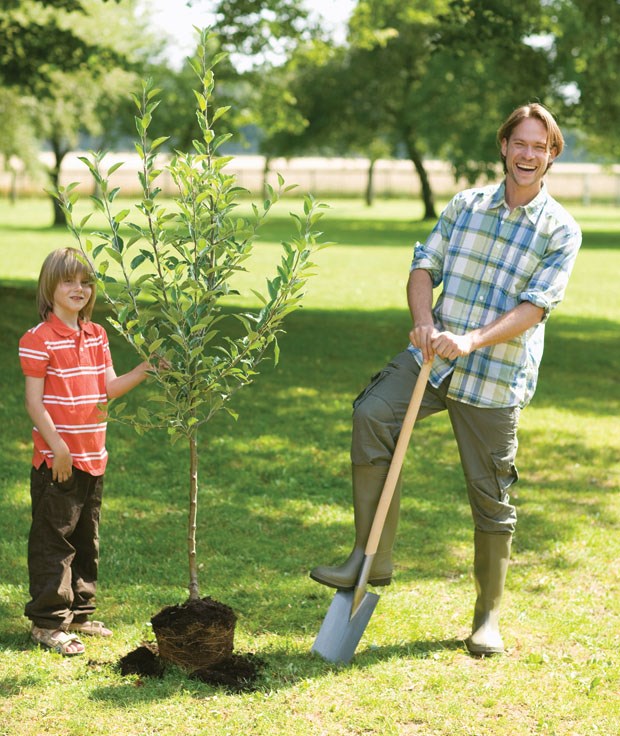Outdoor projects often top homeowners'to-do lists in spring and summer. Planting trees around the yard is one popular project that can improve property value and benefit the environment.
Why plant trees? There are plenty of reasons to plant trees. Trees provide a natural form of shade, reducing air temperature by blocking the sun's rays. This can reduce reliance on air conditioning systems and make it more comfortable to spend time outdoors during the summer.
Trees also can trap dust, pollen and smoke. Trees also absorb carbon dioxide and potentially harmful gasses from the air. One large tree can supply a day's worth of oxygen for as many as four people, while also storing 13 pounds of carbon per year.
Getting started Visit a garden centre or nursery and select a tree that will be hardy in your planting zone. Choosing native trees increases the likelihood the new tree will adapt to its surroundings.
Also, inspect trees to determine if they're healthy before taking them home. Look for evidence of root girdling, which occurs when the roots circle around the perimeter of the container and surround the trunk. Trees should not have any dead or dormant branches.
Select a spot that can make it easier for the tree to grow tall and wide. Avoid planting near the house, where roots can crack concrete or asphalt, and always plant away from underground pipes.
Planting the tree Now it is time to amend the soil. It's not enough to enrich only the soil in the hole where the tree will be placed. Move out into a circular area beyond where the roots will start so they can expand and properly anchor the tree. The next method of success is to ensure the tree has a large enough hole to contain the existing root ball and allow for roots to expand.
Better Homes and Gardens experts say to prepare a hole that is two to three times as wide as the root ball of the tree. Treat the root ball gently. If the roots are wrapped in burlap, remove the burlap or push it to the bottom of the hole.
Backfill the hole with soil and check that the tree is straight. Stake the tree to help it stay straight until the roots anchor it more effectively. A layer of mulch around the base can prevent weeds and reduce water loss.



